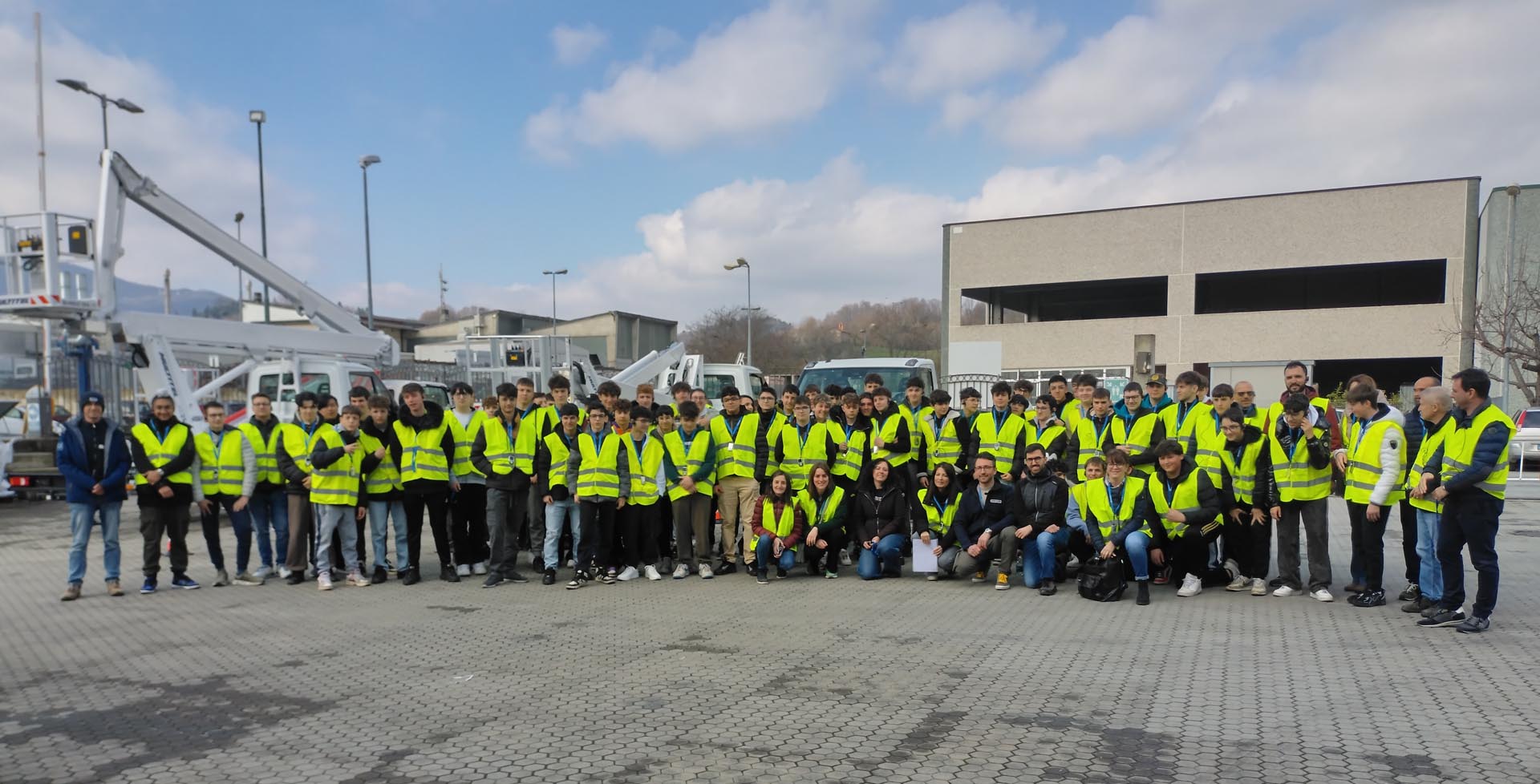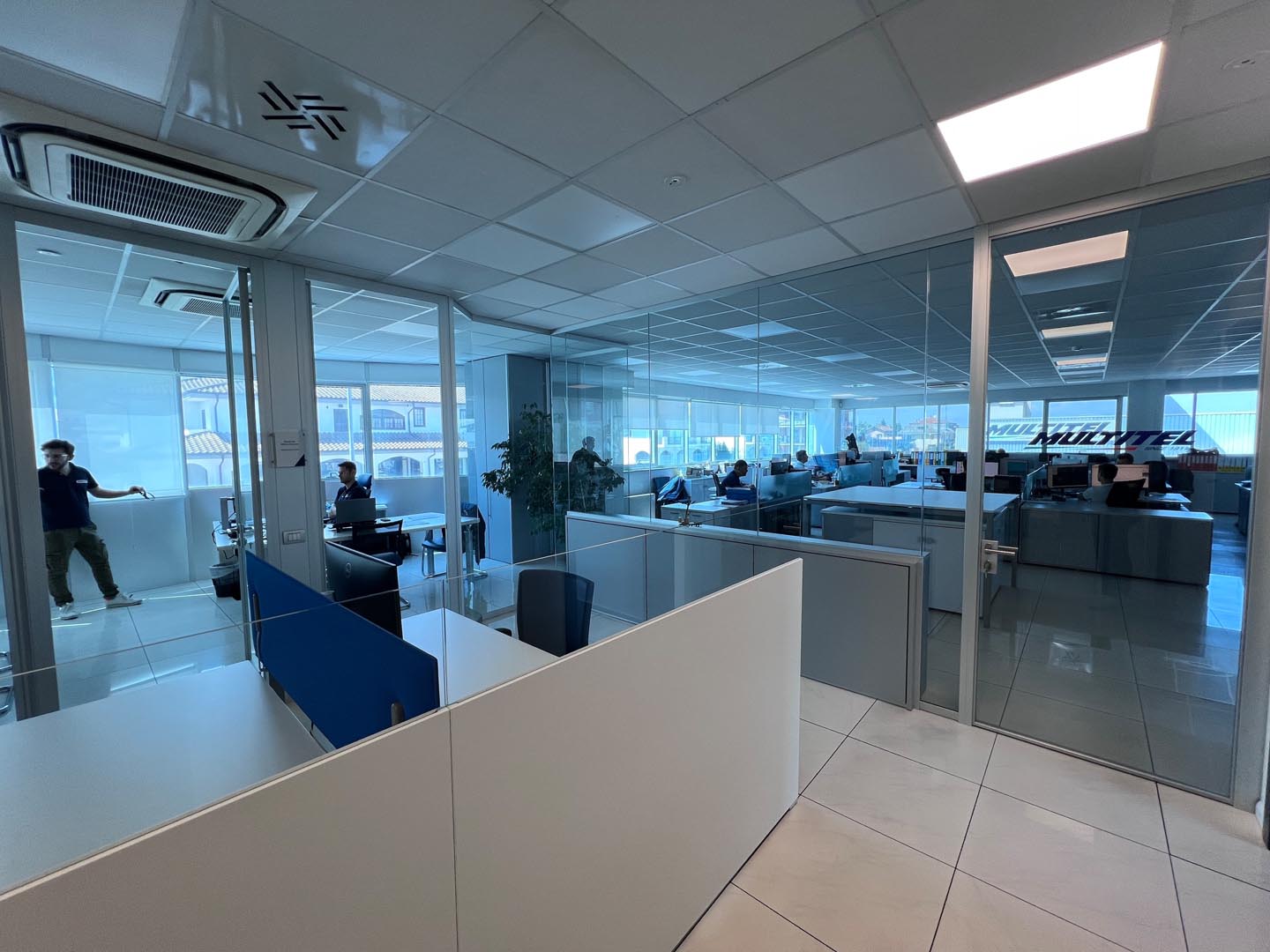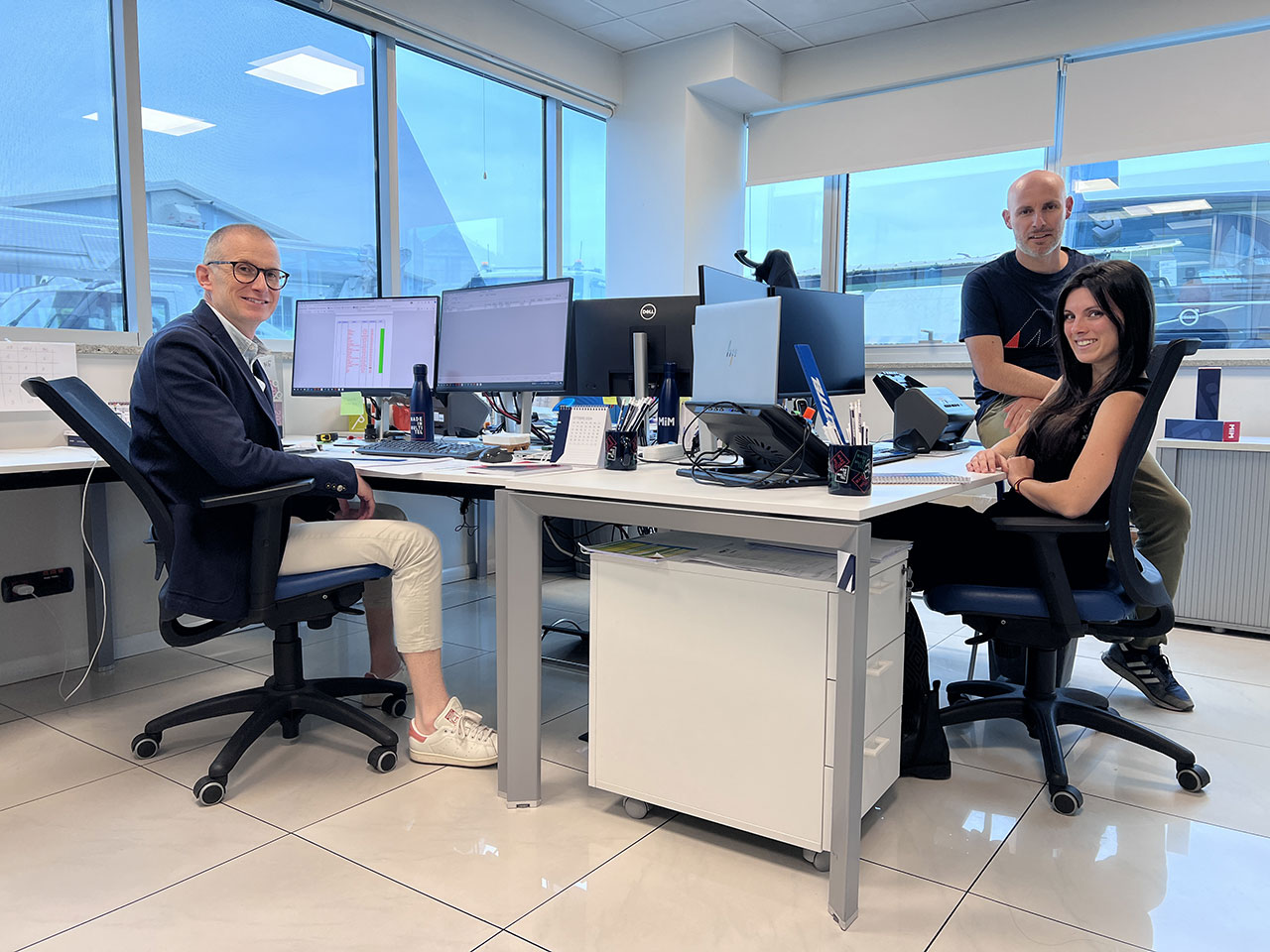Before coming here in December 2017, Davide Demaria already had 16 years’ experience in a company whose past and work philosophy is fairly similar to that of Multitel Pagliero. Through his work in the technical division and then in production he had gained the necessary knowledge for purchasing management. Knowledge that, at Multitel Pagliero, enabled him to successfully continue and progress the work formerly done by the company’s current CEO Fabio Pagliero.
What does the purchasing department do?
Our department is in charge of procuring nearly all products and services needed, including direct components (related to manufacturing) and indirect components (stationery, furniture, etc.). The only exception is the trucks on which we mount our platforms, which are purchased by Management.
How many people are in the work group and what are their tasks?
I perform the needs analysis, validate purchase proposals by department heads, search for new suppliers and conduct negotiations. In addition to me there are:
– Martina, an engineering manager, who assists me in the management and procurement of electrical/electronic material, in prompting supplies in general and, very importantly, in the registration of incoming goods. This work allows us to always make sure that real stocks are in line with needs and to have control over any delays.
– Enrico, who is in charge of setting out proposals and purchase orders on our ERP system, entering order confirmations, checking data and updating the system. Furthermore, all purchases of production support items pass through him (equipment, tools, stationery, etc.), a job in which he puts his previous experience in component sales to good use.
What are the responsibilities and qualities of a person in charge of the purchasing department?
“KNOWLEDGE” is the key word in my opinion. To be able to conduct effective negotiations, it is necessary to know the product that is being bought, which supplier to rely on, the contractual and economic dynamics and, not least, to know where the procured product will be used in the company: this information is essential for weighing up possible alternatives. Obviously, all this must take place in an appropriate amount of time, so “quick thinking” and a “problem solving” ability come in handy. The biggest responsibility, which is common to all businesses, is ensuring that there are no hitches in the supply chain. With a structure as complex as this, changing production plans becomes impossible, therefore any supplier delays or problems must be dealt with and fixed right away.


What other functions do you deal with on a daily basis?
The first meeting is always with the Production Manager, with whom we primarily discuss any problems that need to be resolved right away. With the managers of the technical divisions (mechanics and systems) there is extensive dialogue on the innovations that are about to go into production. And then, since Fabio Pagliero is the focal point of the company and has extensive prior experience in my role, sharing ideas with him is fundamental.
With over two decades’ experience in this field, how much do you feel the purchasing department’s function has changed in general?
Similar to other industries, there has been a technological evolution in materials and products. The only way to know what you are buying is to possess in-depth knowledge (keyword) of the material. Unlike in the past, when the components were traditional and repetitive, ongoing research and updating is now required. Additionally, the pace at which requests and deliveries are made has increased exponentially, sometimes putting us under pressure to find suppliers that are not just technically up to the mark but also rapid.
What are the main challenges you face?
Paradoxically, I think that, compared to the past when we were basically forced to select from the small pool of suppliers known, the abundance of suppliers that we have access to now because of globalisation can sometimes lead to confusion. Multitel Pagliero carefully selects its suppliers to be of absolute and proven trust, and is not taken in by easy enticements. But it’s not always easy afterwards to retain the connection at that level: you have to keep your eye on the ball, never take each other for granted since the suppliers, in a powerful position, could be tempted to raise prices and reduce quality without first talking to us.
The most crucial aspect of the work is undoubtedly making direct purchases since they are necessary to maintain the production chain's efficiency, while also keeping the company’s Finance Department happy. Can you explain how the procurement process works, considering that there are 8 factories with specialised production units?
There are two main ways that the component purchasing process is carried out: first, I assess commitments, requirements, projections and stocks using the management system, and then I issue immediate orders and longer term ones to take place over months. Likewise, department managers generate “request proposals” that are converted into orders once I’ve validated them, again using procedures tracked on the management system. Usually they are for small parts and consumables used by the specific department.
Does the fact that the number of units produced by Multitel Pagliero is substantially steady on a weekly basis make it simpler to determine the purchase budget?
Without doubt, two of Multitel’s many advantages are the steady production rate and having a long-term outlook. This helps us a lot and stacks the cards in our favour with suppliers to negotiate better prices and deliveries acceptable to everyone.
A couple of years ago, Covid caused a supply issue for many industries. Did this impact Multitel Pagliero too?
The two subsequent years were more challenging for us. It was a “perfect storm”: exponential growth in production couple with a severe shortage of material. Even though we had to work twice as hard, we were able to minimise the disruption because of our excellent relationship in earlier years with suppliers. Preventive action is always better than solving issues as they arise.
Is the purchasing department involved in the choice of supplier? Is it required to assess the quality of the product, raw material or the dependability of the supplies?
The decision about the supplier is mostly made by our department. Obviously we discuss matters with the technical divisions, but we always oversee the question. It is important to know who is ultimately in charge to avoid any misunderstanding and making incorrect decisions or causing delays to decision-making times. We also confer with the Quality Department as they are responsible for compliance checks: the statistics they extrapolate are useful for determining the product’s characteristics and parameters, and consequently deciding on the supplier.



Does the fact that Multitel Pagliero produces 95% of what it sells itself make your job easier?
While it’s true that we don’t deal with “semi-finished” components because they are made in-house, purchasing the “raw” materials is not so simple. Qualitatively, buying raw materials in large quantities necessitates having the knowledge and skills necessary to negotiate with international players, such as steel mills and foundries.

PURCHASING DEPARTMENT MANAGER
Julio Velasco as the coach who inspired Italy to dream big with women’s volleyball at this summer’s Olympics, made a remark that I’ll use to describe the approach I want in myself and in my collaborators: “The attacker doesn’t criticise the spike, she just gets on with the job”. Put another way, what we need to do is achieve our goal, not waste time on recriminations. We need to focus on our work and find solutions, not excuses: this spirit can be felt in Multitel as soon as you enter the various plants, all the way up to the level of Management. We convey this efficiency every day to our current and potential suppliers, so that they can be aware of our demands and expectations from them. And we need to nurture this efficiency to be ready for the new and stimulating adventures that lie ahead of us.





